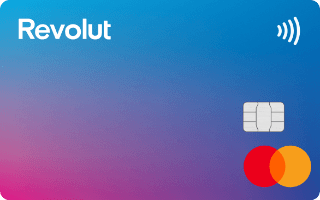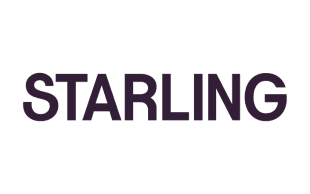Please note: You should always refer to quotes you receive from transfer services themselves directly for exact amounts as they may vary from our estimates.
Revolut and Starling have transformed the way we bank, with real-time account information, fee-free spending abroad and detailed insights into your spending. They provide cheap (or free) easy mobile banking and a great alternative to the traditional banks. If you’re undecided about which account to open, we take an in-depth look at both Revolut and Starling to help you decide between them.
Revolut's £20 sign-up bonus for new accounts
Revolut is currently offering a £20 sign-up bonus when you open a new account, making it a strong sign-up incentive compared with any other provider.See deal
Revolut vs Starling: Vital statistics
With the free Revolut account (called Revolut “Standard”) you receive a blue and pink two-tone card, while Starling’s free (and only) current account comes with a teal-coloured vertical card.
Neither apps have branches, but you can withdraw or deposit money into your Starling account at Post Office counters. You can also apply for an overdraft with Starling, a facility that Revolut doesn’t offer.
Starling has a UK banking licence, which means individual customer funds up to the value of £120,000 are protected by the Financial Services Compensation Scheme (FSCS) if the bank goes bust. Revolut was granted a UK banking licence in 2024, but its accounts don’t come with FSCS protection yet. But as a FCA-registered electronic money institution, it does keep its customers’ funds in a separate account at a licensed UK bank, which means the money is ring-fenced should Revolut cease operating.
In Finder’s 2025 Banking Customer Satisfaction Awards, Starling scored 4.4 out of 5 stars in our customer survey, with 93% of its customers saying they would recommend the current account. Meanwhile, Revolut scored 4.5 out of 5 stars, with 93% of its customers saying they would recommend one of its e-money accounts.
Finally, Revolut currently runs a number of welcome promotions including a sign-up bonus for new customers where if you open an account, you can receive £20.
Round 1: App features
Revolut and Starling both have a comprehensive range of features available in their mobile banking apps. Both have spending categories, where your transactions are automatically placed into an appropriate category, such as utility bills or eating out. Although with Revolut you can create and customise your categories, whereas with Starling they are pre-set.
You can also analyse your daily, weekly or monthly spending insights in both apps, which helps you set budgets, as well as receive alerts you when payments go in and out of your account.
Revolut’s “Vaults” and Starling’s “Goals” let you put money aside for specific treats or targets, like a holiday or a savings goal. Plus both offer “round-ups”, where spare change from your transactions can be “rounded up” and put into your savings bucket.
You can pay your salary into either your Revolut or Starling account, manage direct debits and make international payments. You can freeze or unfreeze your card in the apps, as well as contact both customer service teams through the in-app chats. With Starling you can also speak to customer service agent over the phone, but that’s not possible with Revolut.
You can also use Starling’s cheque scanning tool to pay cheques into your account should you need to, whereas Revolut doesn’t accept cheque deposits at all – or cash deposits, for that matter.
- Winner: Starling. Most of this duo’s feature options are identical, so this is a close call. Starling shades it for offering the ability to digitally deposit cheques and speak to the customer service team on the phone.
Round 2: Spending in the UK
Spending on your Revolut or Starling card is free in the UK, and both cards currently have the standard contactless limit of £100.
You can also add your Revolut card or Starling card to Apply Pay and Google Pay, but only Starling supports Samsung Pay.
Starling offers unlimited free ATM withdrawals in the UK. With Revolut you can make up to 5 ATM withdrawals or take out £200 for free every month – whichever of those limits you hit first will trigger the subsequent charge of 2% on each following withdrawal (with a minimum fee of £1).
- Winner: Starling, for its unlimited free ATM withdrawals in the UK (plus its Samsung Pay feature, if that happens to be your mobile wallet of choice).
Round 3: Using the card abroad
 |  | |
| Free foreign transactions | Limited to £1,000 per month | Unlimited |
| Free foreign ATM withdrawals | Limited to £200 per month | Unlimited |
| Find out more |
With Starling there is no charge for using its card to make a purchase abroad, or for using the card to take money out of a foreign ATM.
With Revolut, it’s a bit more complicated. You can use your card to make purchases abroad for free on weekdays, up to a monthly limit of £1,000. You can use your card to withdraw money abroad for free on weekdays, up to a monthly limit of £200. But on the weekends, a mark-up of 0.5% applies to both card spending and cash withdrawals overseas (Revolut says this is because the international money markets close over the weekend). That 0.5% mark-up relates to all the major currencies, but for some minor currencies it rises to 2%.
- Winner: Starling. Free card spending and free ATM withdrawals at any time, wherever you are in the world. Simple.
Round 4: Sending money overseas
- Winner: Revolut, thanks to its free (albeit with conditions) money transfers feature.
Starling and Revolut both offer impressive free online current accounts, with a range of features, but you’ll need to look at the fine print to decide your best option. This includes thinking about setting up the account. For example, Starling is a member of the Current Account Switching Service, which makes current account switching automatic within 7 days. Revolut isn’t signed up so you’ll have to move any regular payments over manually.”
Round 5: Account types
 |  | |
| Free account | ||
| Premium account | ||
| Joint account | ||
| Teen account (for 16- and 17-year olds) | ||
| Kids' account or card | ||
| Business account | ||
| Find out more |
Revolut and Starling both offer free e-money and current accounts. For Starling, it’s the only personal current account it operates, but Revolut has expanded its e-money account range with 4 paid-for tiers – Plus, Premium, Metal and Ultra.
Starling offers joint accounts and business accounts, which Revolut doesn’t. Starling also operates a kids’ card called Starling Kite, while Revolut has a kids’ account called Revolut <18 Account (both of which are managed through the parent’s account).
- Winner: Tie. Both have a free account that can be linked to a kids’ card or account. If you’re after a joint account or a business account, then head over to Starling, but if you want a paid-for premium account with some perks, check out Revolut.
Round 6: Signing up
 |  | |
| Apply through the app | ||
| Quick application | ||
| Credit check | ||
| Card delivery fee | £4.99 | Free |
| Card delivery timescale | Up to 9 working days | 3-5 working days |
| Find out more |
You can apply for either a Revolut or a Starling account through their respective mobile apps in a matter of minutes. There are no credit checks, although a photo of your ID and a selfie is required. The accounts are then usually opened on the same day and both the cards are sent through the post. Starling does this for free, while Revolut charges £4.99 for card delivery.
- Winner: Starling. Although both accounts are quick and easy to open digitally, Revolut charges a fiver to have your card delivered and the standard delivery time is not even that speedy.
Round 7: Access to extra benefits
With Revolut, you can open a free euro account alongside your main account. Meanwhile, Starling offers access to a “marketplace” where you sign up to financial products from its selected partners, who deal in things like insurance or pensions.
But the other extra features available with a Revolut account is probably where it comes into its own. You have the option to trade shares or buy gold and silver through your Revolut account. Fees per trade do apply for Revolut “Standard” account holders, but the ability to do this through an e-money account remains pretty unique.
- Winner: Revolut, for the additional options around trading directly through its banking app (although remember, your capital is at risk if you do decide to make investments).
Round 8: Customer reviews
On Trustpilot, Revolut has a score of 4.4 out of 5 from over 190,000 reviews. Starling has a score of 4.2 from 43,000 reviews. These were checked in March 2025.
Reviews said Revolut is easy to use, though there was some frustration about accounts or transactions being frozen while they were under review.
Starling customers said the app was easy to use, but there were some complaints about technical problems.
In our 2025 Finder Customer Satisfaction Awards, Revolut scored 4.5 out of 5, with 93% of those surveyed saying they’d recommend the brand to a friend. Starling scored 4.4 out of 5, with 93% of the customers we surveyed saying they would recommend the bank to a friend.
- Winner: Revolut, with better scores in both.
Overall winner: Which is better, Revolut or Starling?
Starling. The free accounts from Revolut and Starling are very similar. Both are managed via an app, both have spending analysis and budgeting features, and both accounts can be used to make international transfers.
This makes it hard to choose one above the other, but if we had to pick just one to open, it would probably be Starling. It’s a completely rounded current account, with the ability to deposit cash and cheques (which you can’t do with Revolut), plus it’s unbeatable when it comes to spending and withdrawing money overseas (whereas Revolut imposes limits on it’s free allowances for this). Starling’s UK banking licence means that its customers’ deposits are protected by the FSCS, and it doesn’t charge you for delivering your card.
That’s not to say that Revolut doesn’t have some distinct advantages of its own. It’s currently free to transfer money to any account in the SEPA (Single European Payments Area) region, plus if you’re interested in trading then you can do it directly from your Revolut app.
Sources
More guides on Finder
-
Monzo Max review: Is the account worth it?
Is the Monzo Max account worth applying for?
-
Is Monzo Perks worth it?
Are Monzo Perks, Monzo Max and Monzo Extra worth the money? See our analysis in this video review.
-
Best online-only banks in the UK
Online-only banks have some limitations, but they also tend to offer handy features that might convince you to switch.
-
How to withdraw cash from an ATM without your debit card
If you’ve forgotten or misplaced your bank card and need to take out cash, several options are available. From where to get cashback to what you need to take to a branch, here’s what you need to know.
-
How to get a prepaid debit card without ID
Prepaid cards are a good option for people who don’t have any traditional forms of ID. Discover what you could use instead.
-
BuildMyCreditScore review
Discover more about how BuildMyCreditScore works, which banks it connects to and how long it will take to improve your credit score.
-
Banks that allow you to pay cheques in online
Discover which banks let you pay in cheques online and how to do it.
-
Advantages and disadvantages of an overdraft
Find out more about the pros and cons of an overdraft.
-
Santander Edge Up review
Level up your cashback earning potential with the Santander Edge Up current account. Find out about its features and benefits in our review.
-
Monzo bank account and card review
Is Monzo’s app-only current account the right option for you? Read our review to get the low-down on all of the features of the account, its card and the app.



